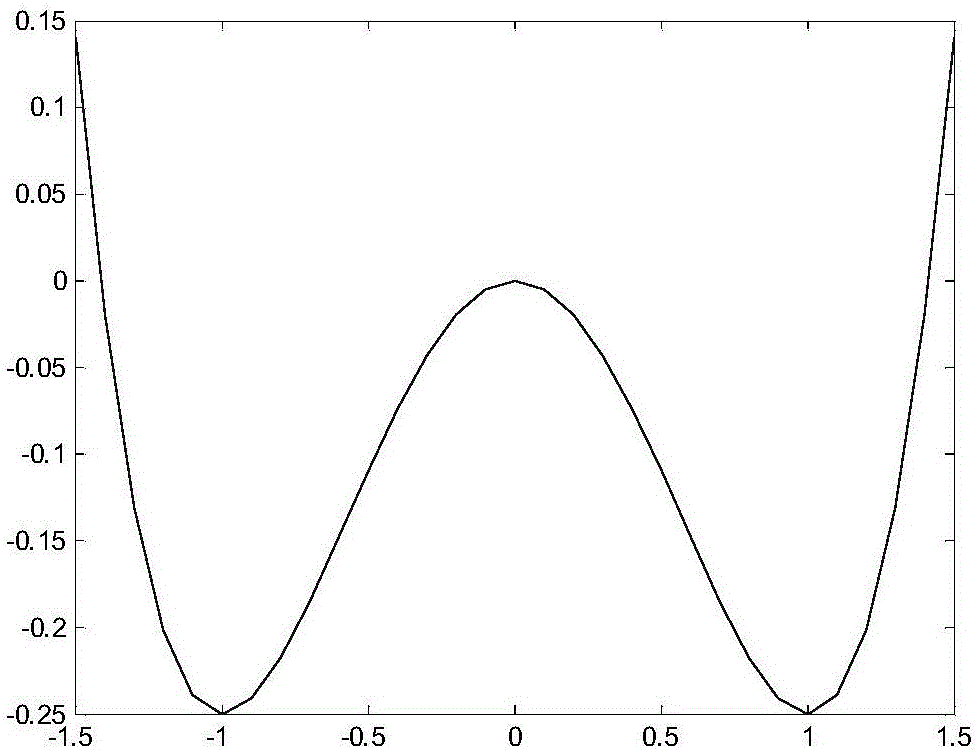Reinforcement learning adaptive stochastic resonance method for underwater weak signal detection
A weak signal detection and stochastic resonance technology, applied in neural learning methods, genetic laws, biological neural network models, etc., can solve problems such as signal damage and achieve the effect of enhancing weak signals
- Summary
- Abstract
- Description
- Claims
- Application Information
AI Technical Summary
Problems solved by technology
Method used
Image
Examples
Embodiment Construction
[0021] The invention provides a method for detecting underwater weak signals by using an adaptive stochastic resonance system based on reinforcement learning. Using the mechanism of reinforcement learning, combined with genetic algorithm, the accurate system parameters required to achieve stochastic resonance under different noise environments are obtained, so as to realize the enhancement of weak underwater signals.
[0022] In the bistable stochastic resonance system, the Brownian particles tend to move under the action of a nonlinear potential field U(x), the graph is shown in figure 1 .
[0023]
[0024] Potential function (let a=1, b=1)
[0025] Deriving the potential function to obtain the external potential field force, that is
[0026] f(x)=-U'(x)=ax-bx 3 (2)
[0027] The external driving force is composed of three parts: the external potential field force f(x), the driving signal s(t), and the noise n(t), namely
[0028]
[0029] Let f(x)=0, three solution...
PUM
 Login to View More
Login to View More Abstract
Description
Claims
Application Information
 Login to View More
Login to View More - R&D
- Intellectual Property
- Life Sciences
- Materials
- Tech Scout
- Unparalleled Data Quality
- Higher Quality Content
- 60% Fewer Hallucinations
Browse by: Latest US Patents, China's latest patents, Technical Efficacy Thesaurus, Application Domain, Technology Topic, Popular Technical Reports.
© 2025 PatSnap. All rights reserved.Legal|Privacy policy|Modern Slavery Act Transparency Statement|Sitemap|About US| Contact US: help@patsnap.com



